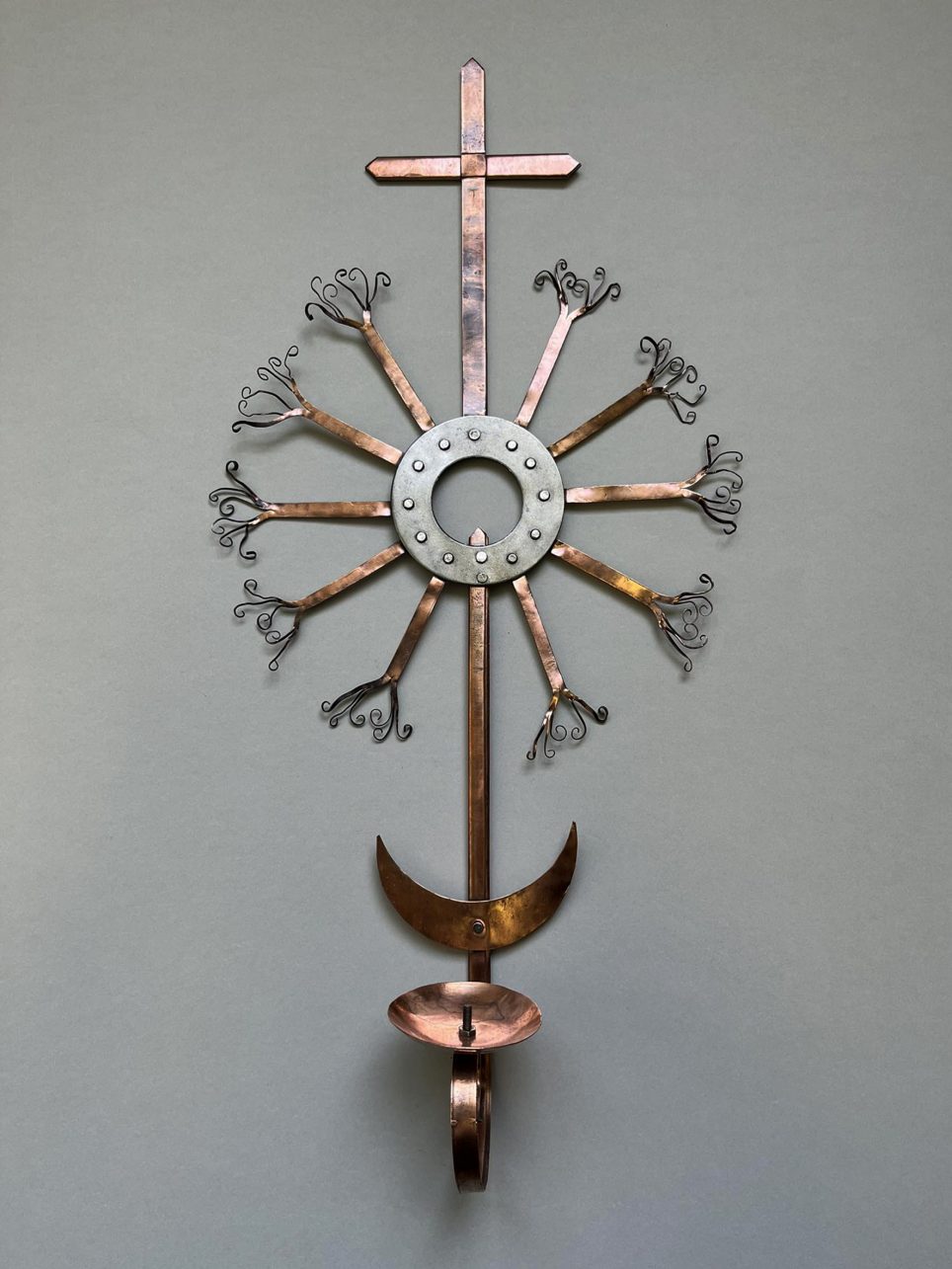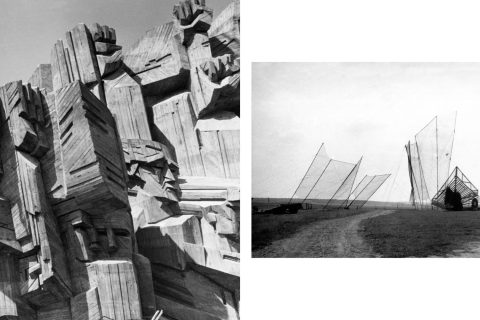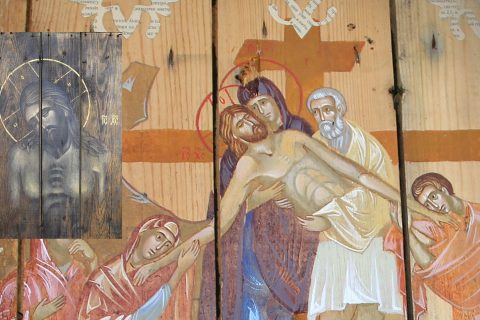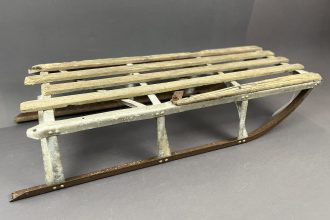Martynas Kosas, the restorer at the Kaunas Ninth Fort Museum, invites you back to his workshop in this week’s Museum Wednesday column.

The cross-sun has been preserved for many years in Kaunas Ninth Fort Museum. It is a traditionally made piece of sacred architecture. Each of us has seen chapels, church and chapel roofs or gates decorated with such suns. Such a sun usually consists of a flat cross connected in the centre by a circle known as the solar disc. From the centre of the disc, rays, which can be of various shapes, resembling grass snakes or plant motifs, can be seen. Crosses-suns have been known in Lithuania since the 18th century; they were made by blacksmiths and folk craftsmen. This decorative element spread in the 19th and early 20th centuries, especially in Samogitia.
One might ask how Kaunas Ninth Fort Museum is related to Lithuanian sacred art. The answer is simple: it is a work made by one of Lithuania’s most prominent personalities, Father Stanislovas, a priest, preacher, monk, saviour of Lithuanian Jews, a figure of resistance to the Soviet occupation and a collector and preserver of religious and folk art.
Algirdas Mykolas Dobrovolskis was born on September 28, 1918 in Radviliškis. He went to Radviliškis primary school and later Kaunas Jesuit Gymnasium. While studying in the gymnasium, he decided to become a monk and entered the Capuchin monastery in Plungė in 1936. During the Second World War, he graduated from the Kaunas Inter-Diocesan Seminary and was ordained a priest. Studying at the seminary, he rescued Jews. This brought him to the attention of the Gestapo, and as Father Stanislovas himself said a few decades later, “It was one step to Auschwitz.” On March 25, 1944, the Capuchin brother minor was ordained a priest and became Father Stanislovas.
A few months later, when Lithuania was occupied by the Soviets for the second time, the monk started a lifelong struggle against the occupiers. He chose to fight not with weapons, but with words: he began to preach sermons in Lithuanian churches, urging the faithful not to succumb to the influence of the Soviet authorities, not to cooperate with the MGB, and to support the anti-Soviet resistance. He was arrested, sentenced by the Special Council to 10 years in a harsh regime labour camp and sent to Inta.
However, even after his return from exile, Father Stanislovas did not give up his struggle. Although he was persecuted and forced to work in the worst conditions in the remote parishes of Lithuania, he continued to take an active part in anti-Soviet activities and distributed forbidden literature. In 1966, the priest was sent to Paberžė, a remote parish in the district of Kėdainiai, which became his eighth parish. After a long period of being moved from one place to another, Father Stanislovas settled there for a longer period. At that time, it was a place in the middle of nowhere; there was not even a bus, and one had to walk four kilometers to the nearest bus stop. However, he did not give in to despair and filled the loneliness in the remote village with work and creativity.
While living in Paberžė, the priest cut and made crosses-suns out of tin, which he gave to people who visited him as a symbol of spirituality, light and goodness. The symbol of the sun given by the hands of Father Stanislovas was meant to convey light and warmth in the black cold Soviet night and to recall the moments of the meeting. It is said that he produced and distributed around thirty thousand of these works. The crosses of a tin sun became a symbol of Paberžė, from which light emanated into the homes of those who did not want to accept the system and injustice. It was a kind of symbol of resistance and future rebirth.
The exhibit of Kaunas Ninth Fort Museum was made approximately 40 years ago. It is a piece of sacred art, which was cut, folded, shaped and riveted from 1 mm thick copper alloy sheet metal. Traditionally, crosses-suns are forged from iron, but Father Stanislovas’s works are distinctive because they were cut from tin. The cross-sun is made up of traditional Christian and Baltic symbols with dozens of meanings and explanations. In the centre, there is a circle representing the sun, a symbol of warmth and life. Incidentally, the sun, unlike the other elements, is made of sheet steel. Possibly, this is the author’s way of highlighting the sun as a key element which, unlike the warm red of copper, shines with the cold grey of steel. The sun symbol has straight rays leading out from it, ending in elaborate and thinning decorations that symbolise plant motifs. At the top, there is a cross representing Christianity, while at the bottom is a crescent moon, the symbol of the old Baltic religion, set horizontally and having a number of meanings: a slice of bread, the rim of a bowl or a solar vessel. At the bottom of the cross, there is a plate for a candle. All the elements are interconnected by rivets. This work was intended for use at home: to hang on the wall and light a candle. Although the construction of the sun and the method of making it seem to be simple and primitive, the ornamentation, the technique and the work put into it create a graceful silhouette and have a symbolic significance.
The exhibit arrived to the restorer’s workshop of Kaunas Ninth Fort in a bad condition. Long years of its storage and preservation in unsuitable conditions resulted in the entire surface being covered with dirt and corrosion products; it was deformed and scratched. A decision was made to clean off the accumulated dirt, to restore the deformed parts, to halt further deterioration and to ensure a display appearance. The surface of the tin sun was cleaned with various conservation and restoration chemicals, soaked and mechanically cleaned again, while the deformed decorative elements were straightened. After the removal of corrosion deposits and dirt, the exhibit was dried and then its entire surface was coated and polished several times with synthetic microcrystalline wax. Finally, the desired result was achieved, giving the tin sun a display-like appearance.





